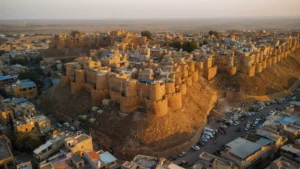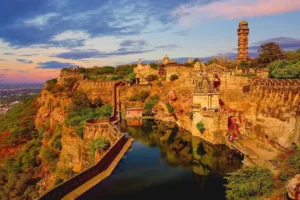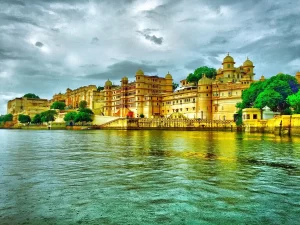Introduction
Chittorgarh, nestled by the Berach River, is more than just a city—it’s a living chronicle of Rajput pride and resilience. Dominated by its iconic fort, the city welcomes thousands of travelers and history enthusiasts each year seeking to unravel the rich tapestry of stories woven into its ramparts. Let’s embark on a journey through this majestic land.
Historical Significance
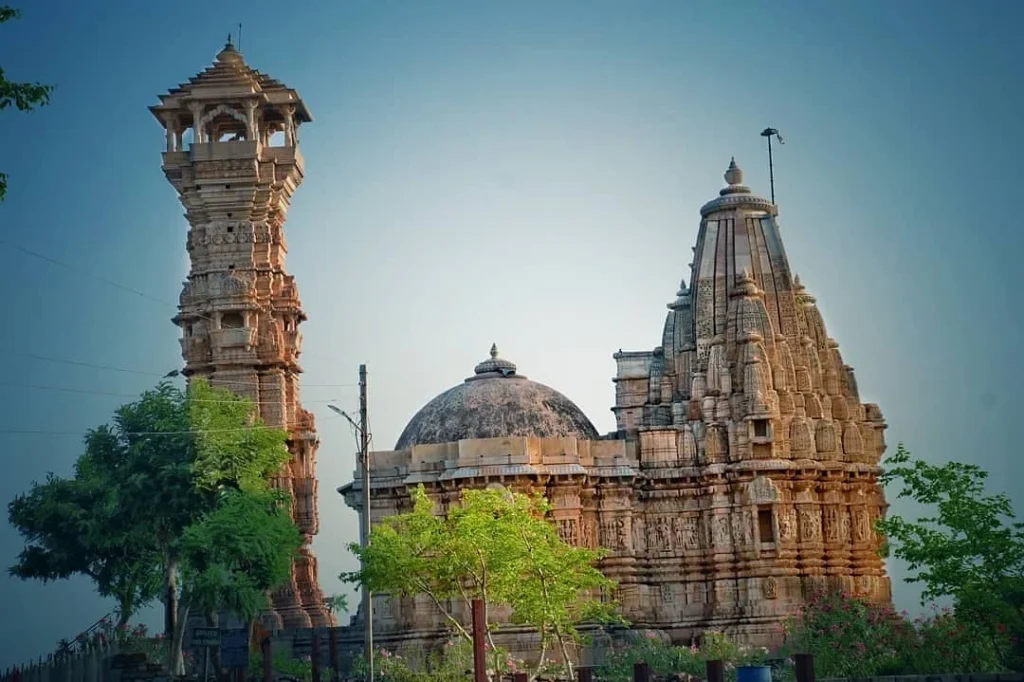
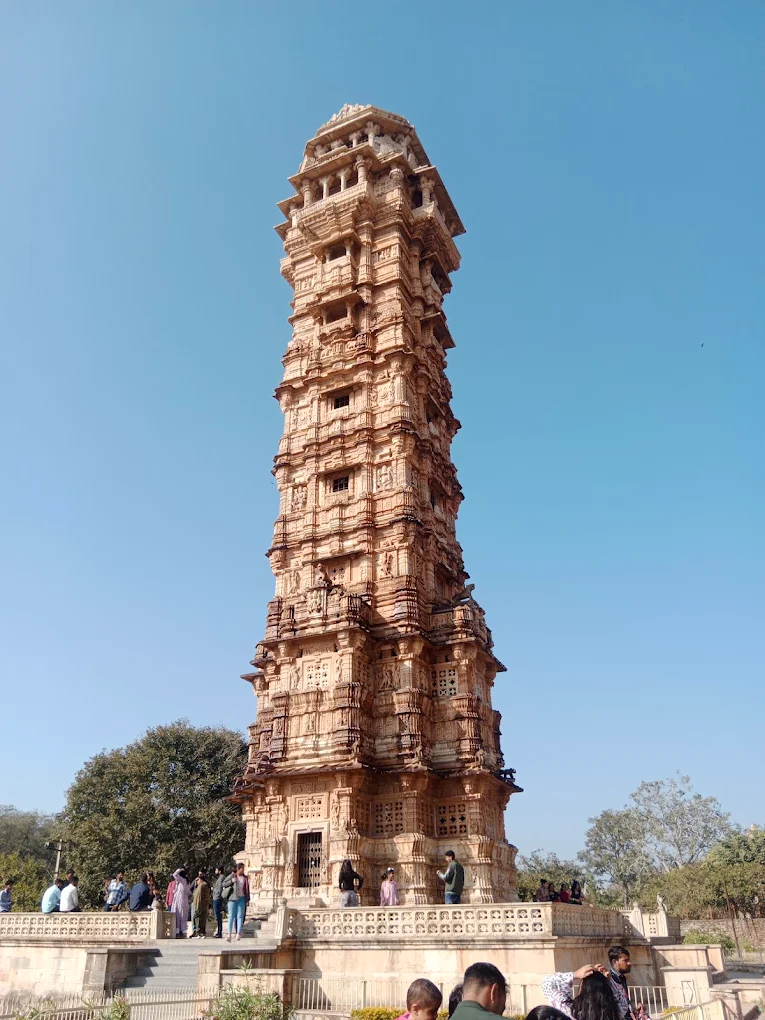
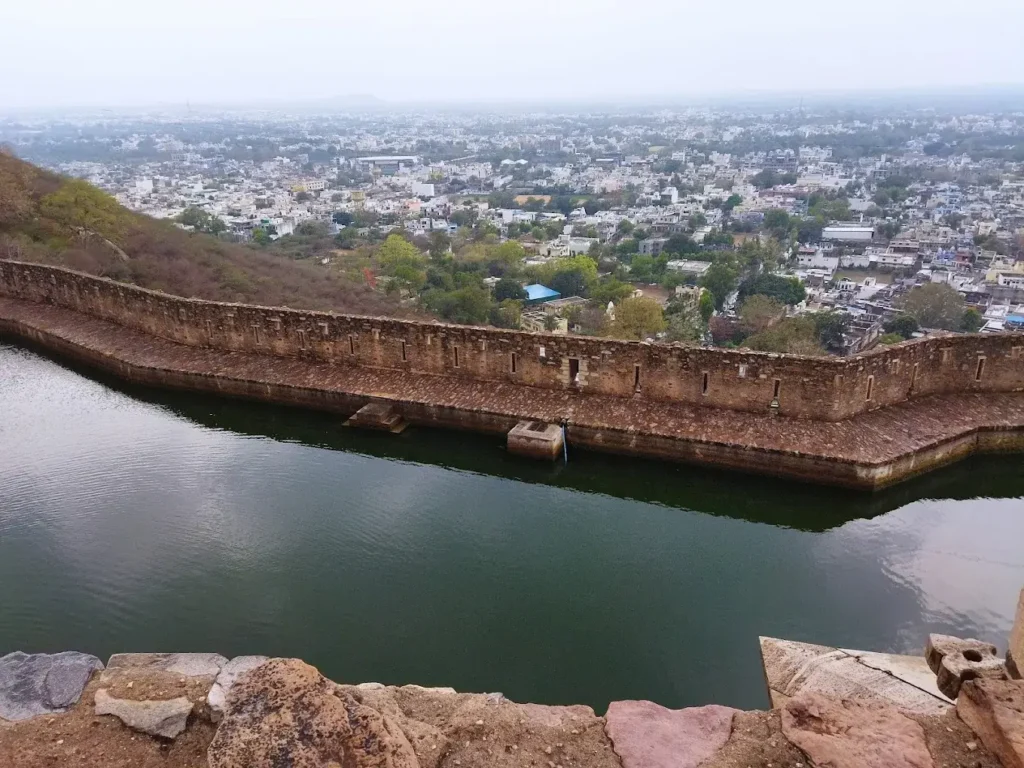
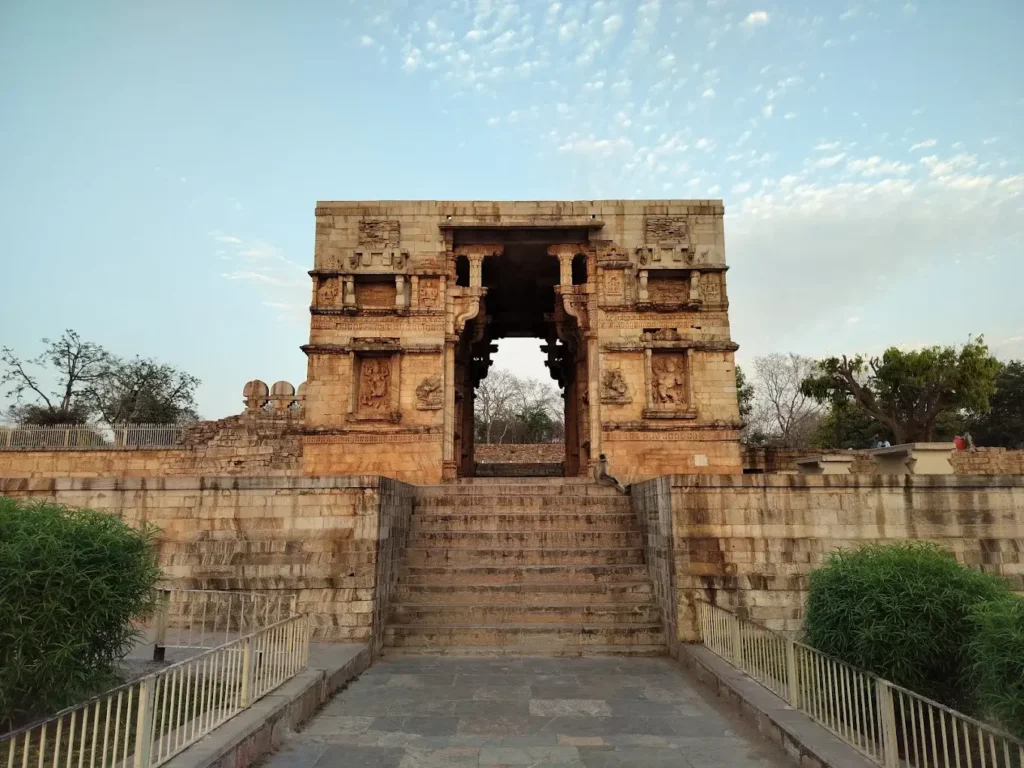
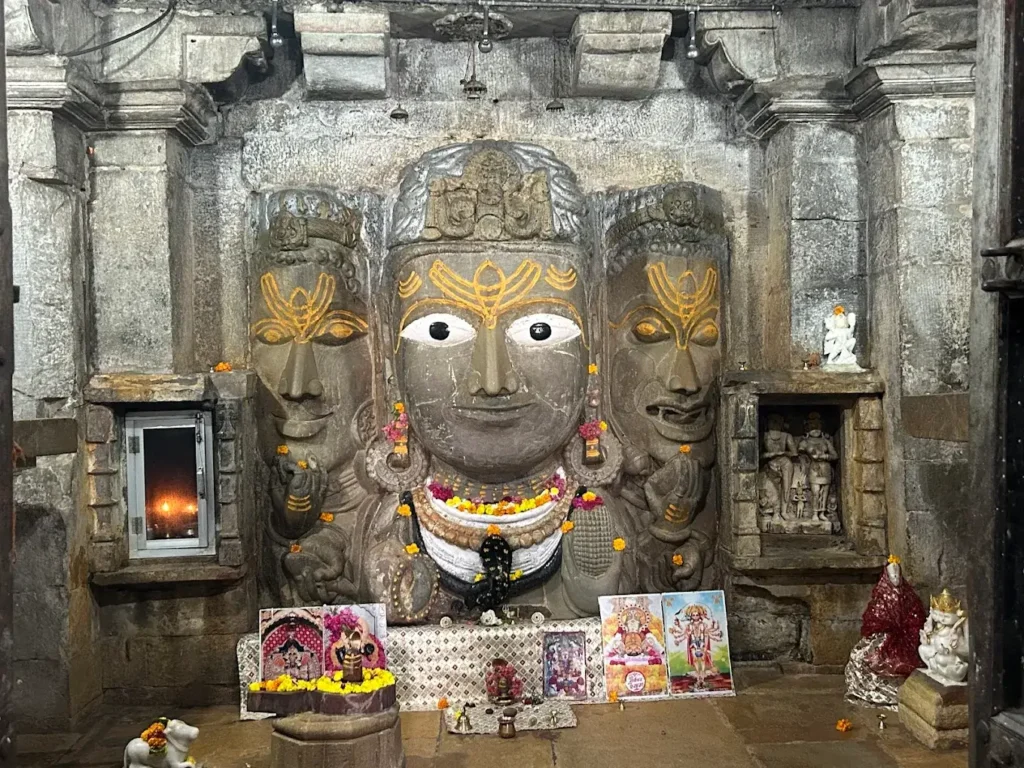
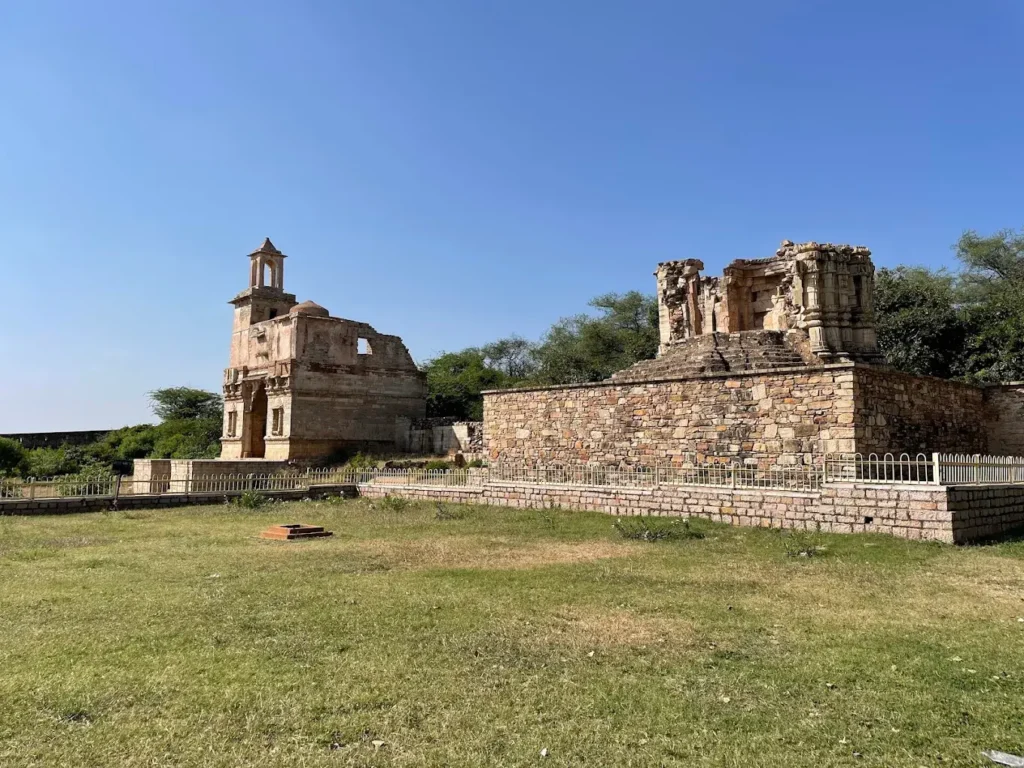
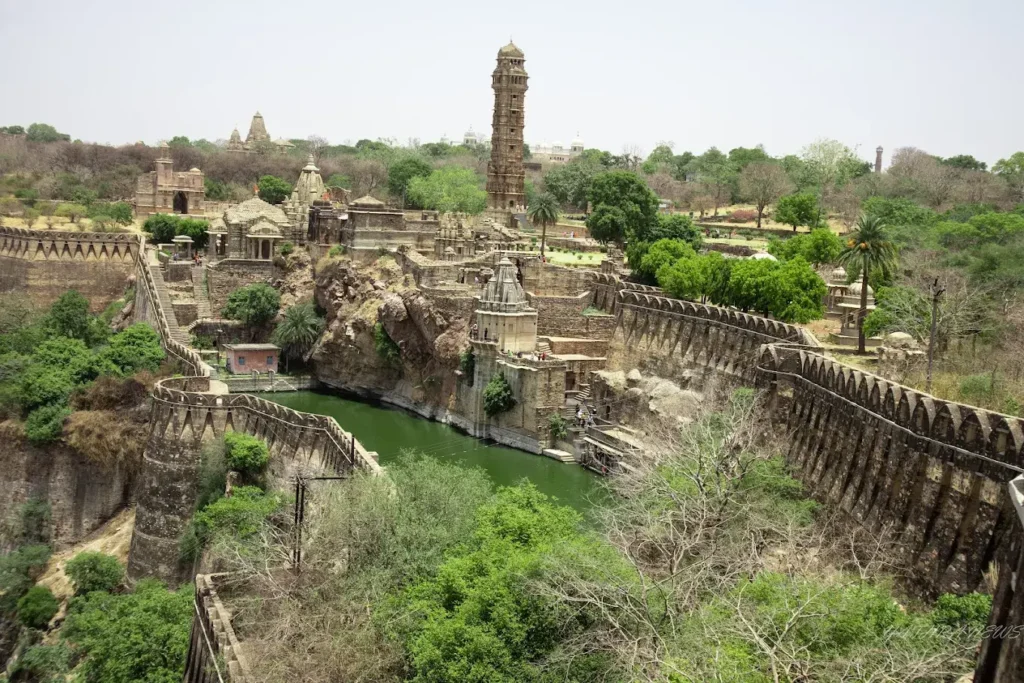
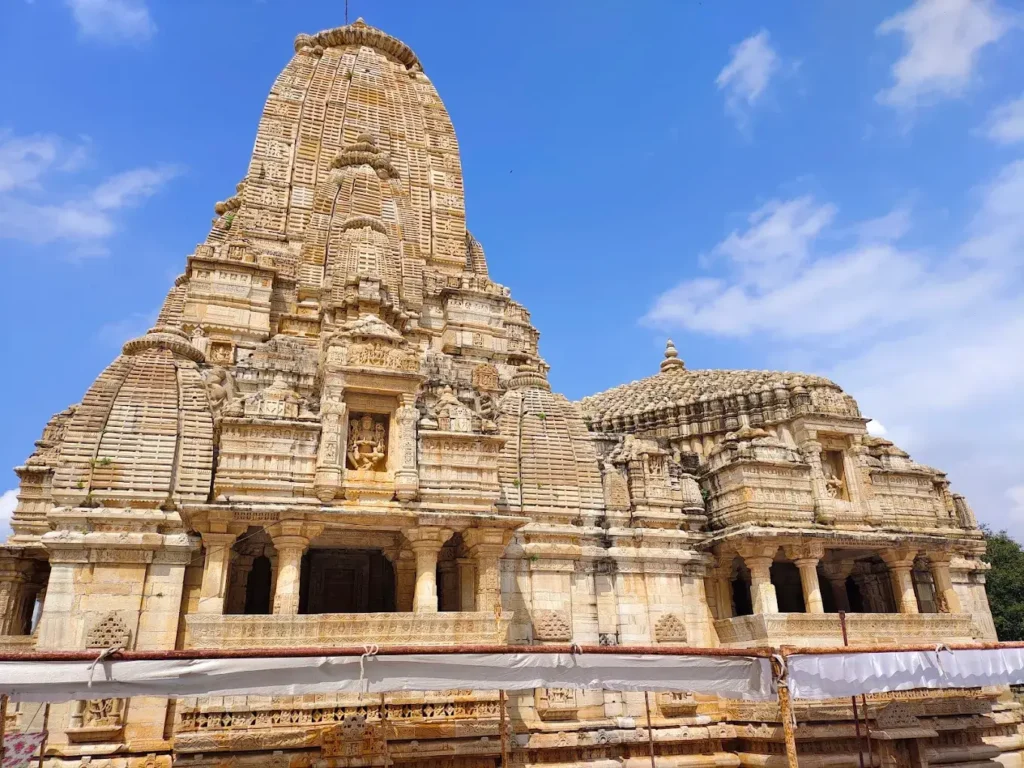
Chittorgarh Fort, believed to have been built in the 7th century by the Mauryan dynasty, later became synonymous with the valorous Rajputs. The fort has witnessed three significant sieges—by Alauddin Khilji (1303), Bahadur Shah (1535), and Emperor Akbar (1567). Each siege is marked by acts of Rajput bravery and the tragic ritual of Jauhar (mass self-immolation by Rajput women) to preserve honor.
Legend celebrates indomitable figures like Queen Padmini, Rani Karnavati, Gurha Jat Ratan Singh, and Maharana Pratap, whose stories add soul to Chittorgarh’s stones. The fort embodies Rajasthan’s martial spirit, making it a UNESCO World Heritage Site that draws heritage travelers worldwide.
Geography and Architecture
Set dramatically atop a 590ft-high hill and sprawling over 700 acres, the Chittorgarh Fort blends naturally with its surroundings.
Ramparts, Moats, and Gates: The fort’s strategic design includes seven massive gates (Pols) and labyrinthine pathways, making defense paramount.
Stunning Temples and Palaces: The impressive Vijay Stambh (Victory Tower) and Kirti Stambh (Tower of Fame) soar above the fort, while palatial structures such as the Rana Kumbha Palace and Padmini Palace offer glimpses into royal life.
Reservoirs and Water Management: Ingenious water bodies like Gaumukh Reservoir and numerous step-wells ensured survival during sieges.
Surrounding Landscape: The city is surrounded by arid plains and patches of green, with the Berach River feeding the local ecosystem.
Activities and Attractions
There’s much to explore and experience in Chittorgarh:
Exploring the Fort: Walking or taking guided tours to truly grasp its grandeur.
Admire Vijay Stambh: Climb this 9-story tower for sweeping views.
Marvel at Kirti Stambh: A 12th-century tower celebrating Jain culture.
Visit Queen Padmini’s Palace: Surrounded by water, it’s steeped in mesmerizing legends of beauty and sacrifice.
Temples within the Fort: The Meera Temple and Kalika Mata Temple are beautiful examples of Rajput and Hindu faith.
Sound & Light Show: Learn history as it comes to life through captivating storytelling and visuals.
Shopping: Local bazaars brimming with handicrafts, jewelry, and traditional fabrics.
Bird Watching: The fort complex and nearby water bodies attract native and migratory species.
Nearby Excursions: Fateh Sagar Lake, Sanwariya Seth Temple, and Menal Waterfalls make for wonderful day trips.
Festivals and Cultural Significance
Cultural vibrancy peaks during:
Jauhar Mela: Held annually to honor the bravery of Rajput women.
Maharana Pratap Jayanti: Celebrates Chittor’s legendary hero.
Teej, Gangaur, and Diwali: Witness colorful local traditions, dance, and music.
Meera Mahotsav: Dedicated to the mystic poetess-saint Meera Bai.
Participating in these festivals offers a rare chance to experience Rajasthan’s living traditions and communal pride.
Conservation Efforts
Chittorgarh, a UNESCO-listed site, is protected under the Archaeological Survey of India (ASI) guidelines. Restoration projects focus on structural preservation, fresco restoration, and sustainable tourism management:
Visitor controls to prevent overcrowding.
Community engagement for upkeep and waste management.
Educational programs to increase awareness about heritage conservation.
Such efforts ensure that Chittorgarh’s glory is passed down intact to future generations.
Best Time to Visit
The climate in Chittorgarh is semi-arid:
October to March is the most pleasant period, with cool, dry weather ideal for sightseeing.
Summers (April–June) can be extremely hot, with temperatures reaching 42°C.
Monsoon (July–September) brings respite but may hamper fort exploration due to slippery pathways.
Plan your trip between November and February for optimal weather and cultural events.
What is the Entry Fee for Chittorgarh Fort?
Indians: ₹50 per person (approx; includes several fort monuments)
Foreigners: ₹600 per person
Children below 15 years: Free
Additional charges may apply for sound & light shows, camera usage, and specific palace entries.
Always confirm on arrival, as fees may change.
What are the Timings of Chittorgarh Fort and Key Monuments?
Chittorgarh Fort: 9:00am – 5:00pm (Daily)
Light & Sound Show: Around sunset (check seasonal timings upon arrival)
Temples/Palaces: Generally align with fort timings, may have brief lunch closures.
It’s advisable to visit early to avoid midday heat and witness the fort’s serene sunrise atmosphere.
Location Map for Chittorgarh
Chittorgarh Fort is located in Chittorgarh district, Rajasthan, India.
By Road: Well connected to Udaipur (120km), Kota (180km), and Jaipur (310km).
By Train: Chittorgarh Junction connects to major Rajasthan and central Indian cities.
By Air: The nearest airport is Udaipur.
5 Reasons to Visit Chittorgarh
Living History: Immersive stories of Rajput pride and epic sieges.
Masterpiece of Architecture: Awe-inspiring ramparts, towers, and water systems.
Rich Cultural Tapestry: Colorful festivals, music, and local legends.
Stunning Views: Panoramic vistas of the Aravalli range and ancient cityscape.
Spiritual Experiences: Serene temples and tranquil spots for reflection.
What Else to do Nearby
Explore Fateh Sagar Lake and Udaipur’s palaces (short drive).
Visit Sanwariya Seth Temple for spiritual experiences.
Head to Menal Waterfalls for a scenic picnic.
Local villages and wildlife sanctuaries offer rustic, offbeat adventures.
Tips for Travelers
Start your fort tour early to cover more and avoid crowds.
Carry water, sunscreen, and hats for sun protection.
Wear comfortable footwear; expect extensive walking on uneven paths.
Hire official guides for deep insights.
Respect heritage regulations—no littering or graffiti.
Cameras and drones may need special permissions.
Allow a full day for a thorough visit.
Conclusion
Chittorgarh is not just another fort; it is an extraordinary testament to India’s medieval heritage, embodying stories of sacrifice and heroism that continue to resonate. From its striking gates and towers to spiritual sanctuaries and lively bazaars, the city is an essential Rajasthan experience. Whether you are a history buff, architecture enthusiast, or cultural explorer, Chittorgarh promises indelible memories and spectacular discoveries.
Plan your trip today to walk through the corridors of time—where legends linger, and Rajasthan’s soul shines brightest.

